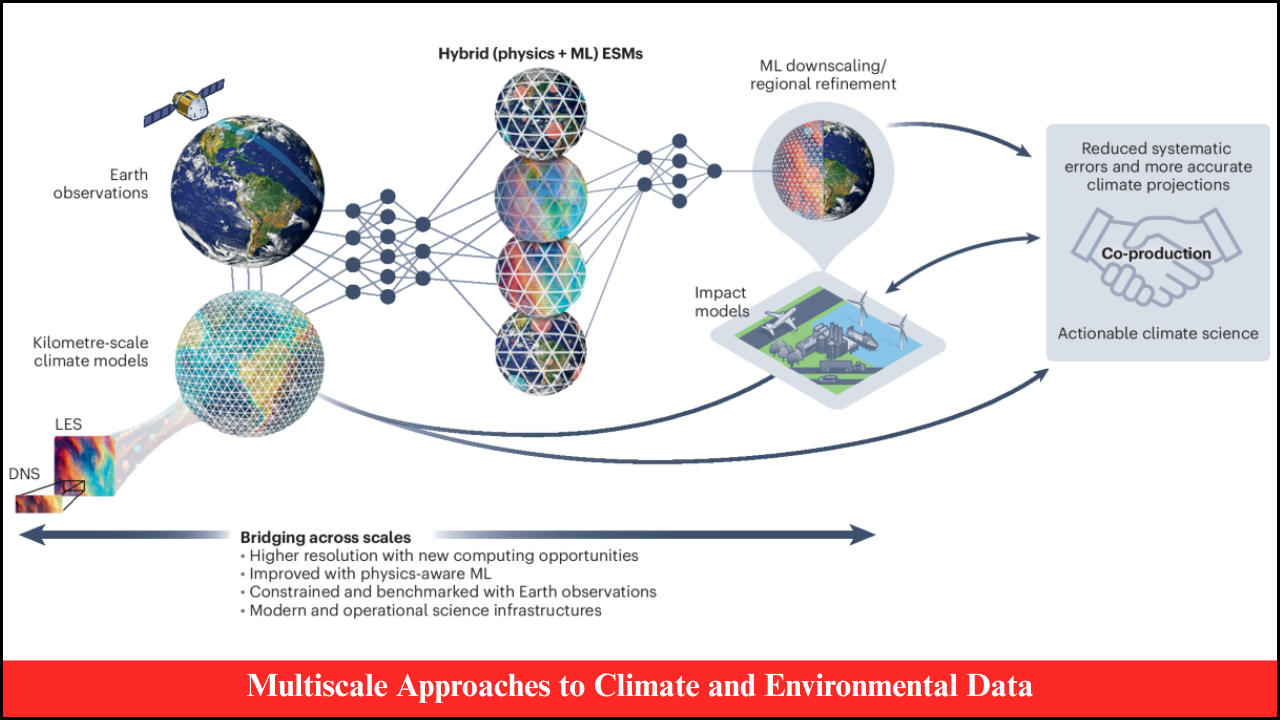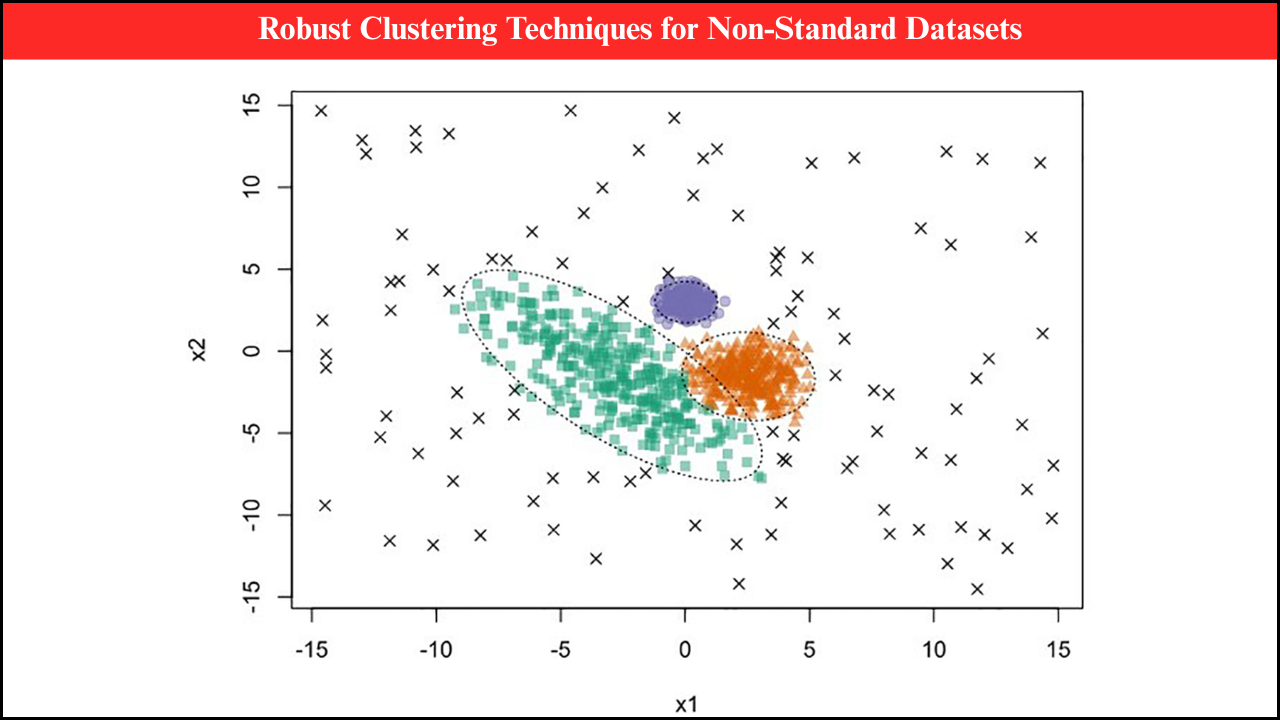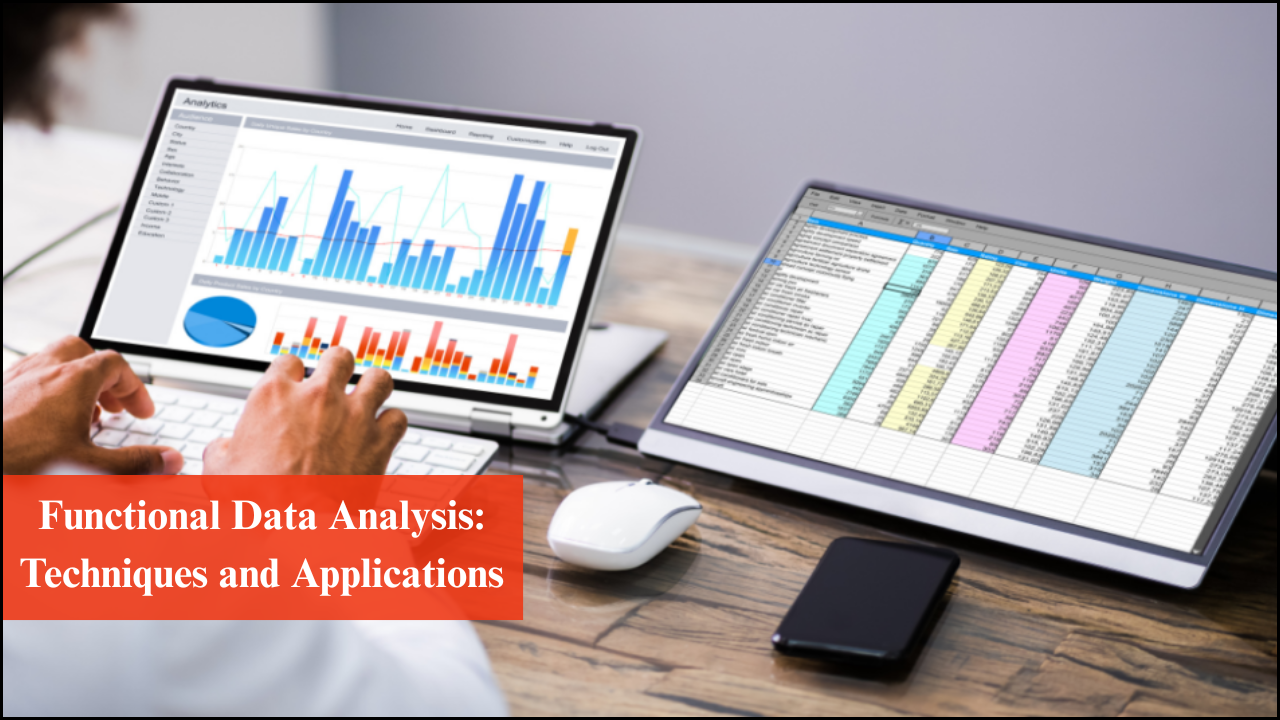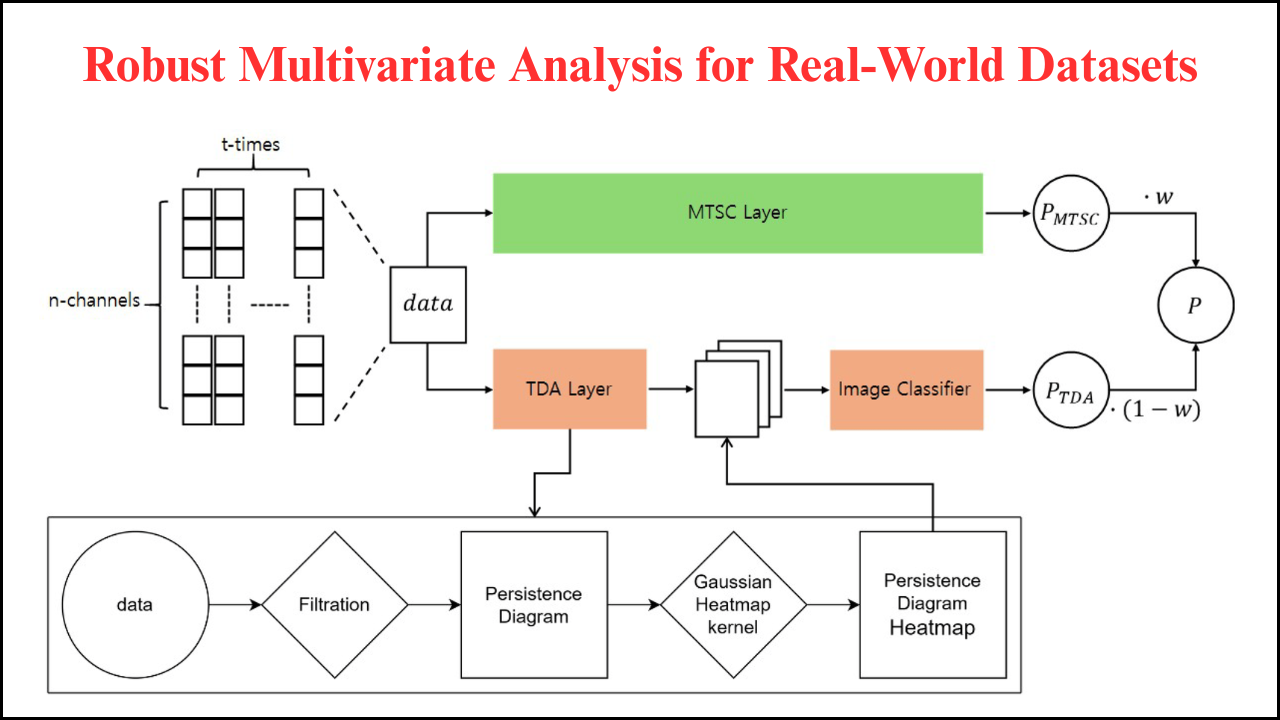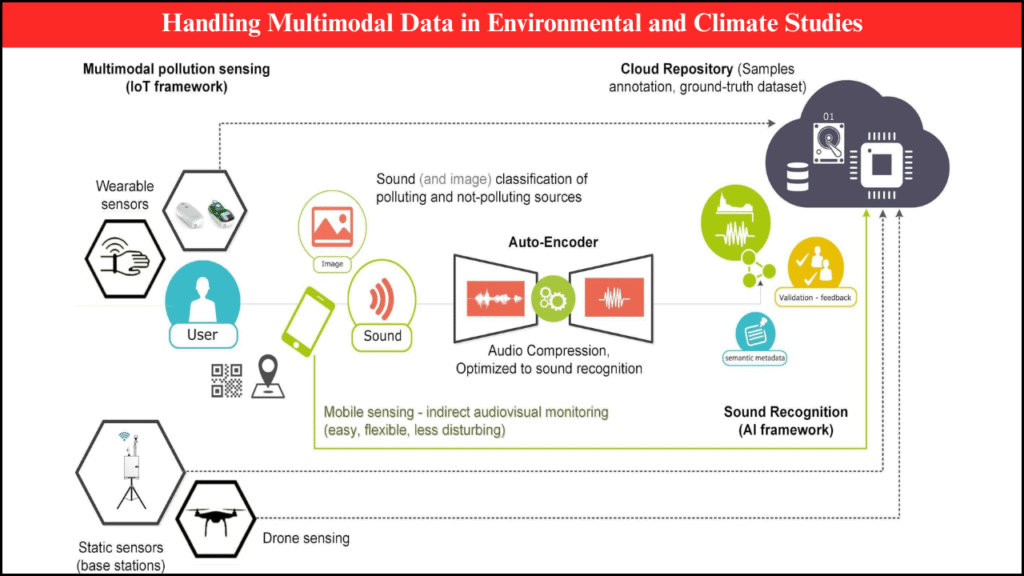
Environmental and climate studies generate massive volumes of data from various sources. Multimodal data, which combines text, images, satellite data, numerical measurements, audio signals, and sensor outputs, has become central in understanding climate systems and ecological changes. Proper handling of this data allows researchers to create more reliable predictions, design effective mitigation strategies, and improve decision-making for sustainable development. A structured approach to managing multimodal data ensures that environmental research is both accurate and applicable in real-world scenarios.
Table of Contents
Understanding Multimodal Data in Climate Studies
- Definition: Multimodal data refers to datasets that include more than one type of information source, such as images, numerical values, and text descriptions.
- Examples in climate studies:
- Satellite imagery of forest cover combined with ground temperature records.
- Text-based climate reports along with air quality sensor outputs.
- Acoustic recordings of wildlife combined with weather pattern datasets.
Key Sources of Multimodal Data
- Remote sensing: Satellites provide imagery, temperature maps, and ocean current details.
- Ground-based monitoring: Weather stations, soil sensors, and river gauges supply numerical records.
- Community reports: Text-based documentation from local communities contributes contextual understanding.
- Experimental data: Laboratory experiments on atmospheric chemistry or biodiversity responses.
- Audio-visual sources: Wildlife recordings and drone videos used in ecosystem analysis.
Importance of Handling Multimodal Data Effectively
- Accuracy in predictions: Combining numerical and visual data increases precision in forecasting events like droughts or floods.
- Holistic analysis: Environmental change is complex, and multimodal data integrates multiple perspectives.
- Policy guidance: Decision-makers rely on well-handled data to frame climate adaptation and mitigation strategies.
- Early warning systems: Accurate integration of multimodal data improves real-time alert mechanisms for disasters.
- Research innovation: Advanced tools like AI models work more effectively with diverse datasets.
Challenges in Managing Multimodal Data
- Data volume: Climate data collected daily is enormous, making storage and retrieval complex.
- Heterogeneity: Different formats, such as images, CSV files, and audio, need standardization.
- Quality assurance: Data often contains errors, gaps, or noise requiring cleaning.
- Interoperability: Integration of datasets from different sources may lack compatibility.
- Processing power: High computational resources are necessary for large-scale multimodal analysis.
- Privacy and ethics: Community-reported data must respect confidentiality and cultural boundaries.
Techniques for Handling Multimodal Data
- Data preprocessing: Cleaning and normalizing datasets for consistency.
- Feature extraction: Identifying important characteristics from each data type (e.g., vegetation indices from images, CO₂ levels from sensor readings).
- Fusion models: Integrating multiple datasets into a single analytical framework.
- Machine learning and AI: Neural networks designed to handle multimodal inputs.
- Cloud storage solutions: Distributed systems to manage large-scale datasets.
- Metadata management: Proper documentation of datasets for reusability and traceability.
Applications of Multimodal Data in Environmental Studies
- Climate change modeling: Integration of satellite temperature data with ocean current patterns for long-term predictions.
- Deforestation monitoring: Use of satellite images, ground reports, and drone videos for accurate forest cover assessments.
- Wildlife tracking: Acoustic signals combined with habitat data to understand migration and population patterns.
- Air quality monitoring: Sensor data, meteorological models, and text-based reports to assess urban pollution.
- Water resource management: River flow sensors combined with precipitation maps for drought and flood planning.
Comparison of Data Modalities in Climate Studies
| Data Modality | Example Source | Advantages | Limitations |
|---|---|---|---|
| Satellite Imagery | NASA, ISRO satellites | Wide coverage, real-time monitoring | High cost, requires expertise |
| Sensor Networks | Weather stations, IoT devices | Continuous updates, accurate local data | Limited spatial coverage |
| Text Reports | Scientific papers, community logs | Provides qualitative insights | Subjective and unstructured |
| Audio-Visual Data | Drones, wildlife microphones | Supports biodiversity studies | Requires large storage and processing |
| Laboratory Experiments | Controlled climate tests | Controlled precision | Limited scalability to the global level |
Strategies for Effective Multimodal Data Integration
- Standardization of formats: Use of common frameworks such as NetCDF for climate data.
- Interdisciplinary collaboration: Involvement of computer scientists, ecologists, and social scientists.
- Data visualization tools: GIS systems and dashboards to make complex data understandable.
- AI-driven fusion: Models that merge text, image, and numerical inputs for unified predictions.
- Capacity building: Training researchers in data science and computational methods.
- Open-access policies: Ensuring availability of data for global collaboration.
Case Studies of Multimodal Data Usage
1. Flood Prediction Systems
- A combination of rainfall satellite data, river flow sensors, and community SMS alerts.
- AI models process multimodal inputs to predict floods with higher accuracy.
2. Forest Fire Monitoring
- Use of thermal imagery from satellites, ground humidity sensors, and real-time drone surveillance.
- Multimodal data integration provides early fire detection.
3. Marine Ecosystem Studies
- Satellite maps of sea surface temperature combined with underwater sound recordings.
- Helps track migration patterns of marine species affected by warming oceans.
Future Prospects of Multimodal Data in Climate Studies
- AI advancements: Development of deep learning models that efficiently handle diverse data types.
- Internet of Things (IoT): More sensor-based real-time monitoring for localized climate conditions.
- Citizen science contributions: Community-driven multimodal data, such as mobile photographs and reports.
- Blockchain for data security: Ensures transparency and authenticity in shared climate datasets.
- Global climate agreements: Use of multimodal data as reliable evidence in international policy decisions.
Advantages and Disadvantages of Multimodal Data Handling
| Aspect | Advantages | Disadvantages |
|---|---|---|
| Accuracy | Improves prediction and monitoring | Errors in one modality can affect outcomes |
| Coverage | Provides a holistic view across scales | Requires integration frameworks |
| Decision-making | Supports evidence-based policies | Processing delays may affect real-time actions |
| Innovation | Encourages AI-driven climate models | Needs high computational resources |
| Collaboration | Promotes interdisciplinary work | Risk of data misuse or privacy concerns |
Best Practices for Researchers
- Adopt multimodal-friendly software platforms.
- Invest in high-performance computing for processing complex datasets.
- Establish data-sharing networks for collaboration.
- Ensure ethical handling of community-based data.
- Encourage training programs on multimodal data analysis.
Final Thoughts
Multimodal data stands as a cornerstone of modern environmental and climate research. Integration of satellite images, ground sensors, laboratory experiments, and community-based reports provides a detailed and balanced perspective on ecological changes. Handling such diverse data effectively not only improves scientific accuracy but also enhances global capacity to address pressing environmental challenges. Future climate resilience will rely heavily on how researchers and policymakers manage, interpret, and apply multimodal data in practical solutions.


